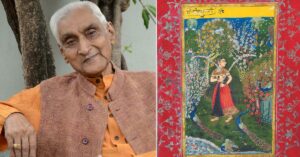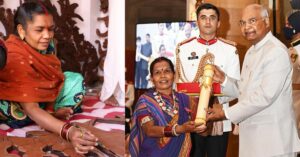How a Tribal Woman’s ‘Bamboo Kandils’ Captured the World Stage
Homemaker, mother and bamboo artist, Namita Namdev Bhurkood of Maharashtra's Tetwali village has trained 57 tribal women in making Diwali kandils that have a demand in the UK and US too.
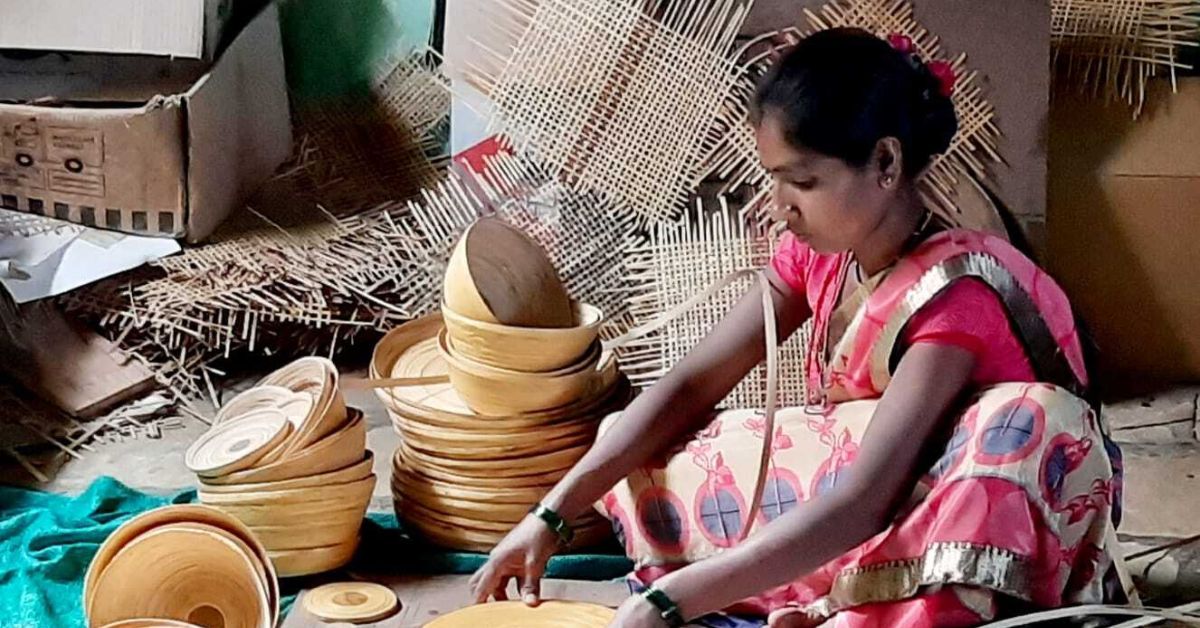
Coming from a small village called Tetwali in Maharashtra, Namita Namdev Bhurkood learned one of the more emphasised roles growing up — being a good homemaker. What she did not realise for a long time was that she could also be the breadwinner of a home.
As she rightly puts it, life is mostly about “rediscovering yourself” every other day. Now, she finds herself in more than one role — a mother, a homemaker, a bamboo artist, as well as the president of the women’s self-help group in the village.
This group transforms bamboo into beautiful products — such as kandils (sky lanterns), phone holders, rakhis, dustbins, photo frames, carts, hangers, keychains and much more. Recently, she led a group of seven women at the G20 Summit in India to showcase their products.
“It felt like we were in a movie. There were leaders and influential people all around us. Never in my dreams had I imagined that I would be in a place like that, let alone lead a team,” Namita tells The Better India.
This Diwali, the group was able to sell over 3,000 kandils. “Our products are sold all over the world including countries like the US, UK, Australia and Canada,” she informs.
From remote villages to G20
Namita’s journey towards independence is a story infused with doses of inspiration and self-belief.
Recalling her days before she learned the craft of bamboo, she says, “My days would mostly revolve around cleaning, cooking, and taking care of my family. I would join my husband in the fields, but that was it,” says the 29-year-old.
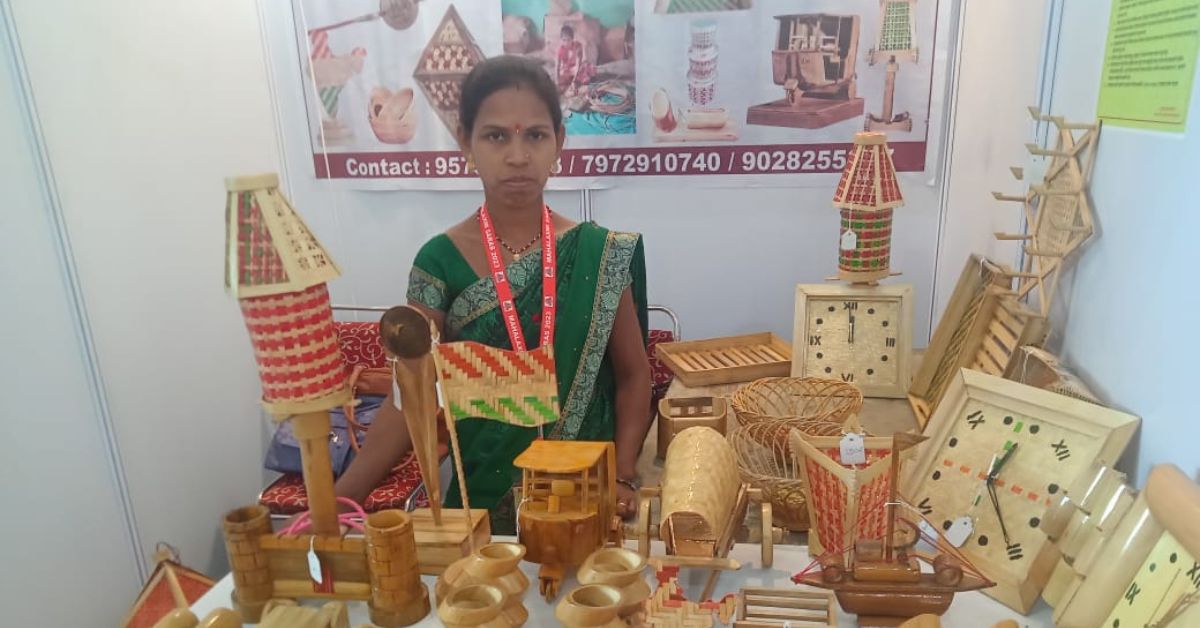
Their earnings from farming were not enough to support a joint family. “My husband and his brother would work hard in the field, but there was never enough money to sustain comfortably,” she says. “Additionally, the yield would always depend on the climate and a lot of other factors. So, I wanted to contribute to the income but was not sure how to do that.”
It was in 2001 when Namita saw a glimmer of hope. “Other women in the village, who were providing training in making bamboo products, informed me that they would also offer employment once we completed our training,” she says.
However, her enthusiasm was curbed by the people around her. “The neighbours and our family friends were against sending the women of the house outside to work. They doubted our ability to earn anything, but my mother-in-law stood up for us,” she says.
By then, both Namita and her sister-in-law had also assumed the role of mothers and had additional responsibilities. “Our husbands and my mother-in-law decided to show faith in us and gave us immense support to go for the training,” she says.
“My mother-in-law would take care of our kids when we attended the training sessions. She would also help us in household work and ensure we had enough time to perfect our craft,” she adds.
The training was being held by an NGO called ‘Keshav Srushti’ headed by Gaurav Shrivastava. It was an initiative to promote women’s empowerment and make them financially independent.
Speaking about the initiative, Gaurav says, “The initiative began to empower tribal women financially in the region. Despite abundant bamboo production, it wasn’t utilised effectively. Therefore, I organised self-help groups to train women in creating bamboo products, which would then be sold nationwide.”
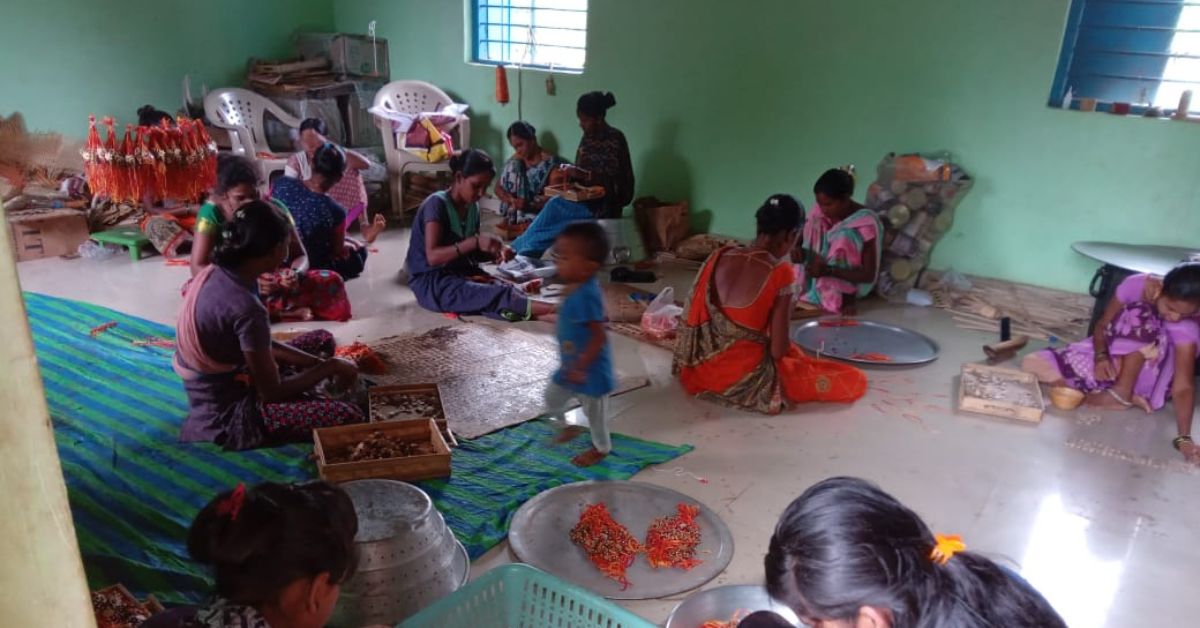
He further informs that this Diwali, they sold more than 3,000 bamboo kandils. “Our products are not only sold in India but throughout the world. We now have 23 villages and 700 women making bamboo products for us,” he says.
Talking about the products, Gaurav notes, “The initiative’s main goal was always to give alternative livelihood to tribal women, but we also wanted to bring alternative eco-friendly products into the market. All our products are natural and made 100 percent out of bamboo. We want to spread the message of sustainability too with our initiative.”
‘I bring the second income in my home’
The training period was about 30 days long, says Namita. “When Gaurav sir asked us what are the uses of bamboo, I was not sure how to answer his question. We would sometimes use it to make carriers but that was it. I was surprised to see how many useful things can be made from bamboo,” she says.
Once the training period was over, we started to get some work. “Initially, we used to get fewer orders, but we kept working hard. Soon, we received more orders. I had faith that if we kept on working, the demand would increase and we would make more money,” she says.
She continues, “Together, we have now established a company by the name ‘Vikramgad Bamboo Udyog Producer Company Limited’ and we will soon be taking orders online too.”
On average, Namita now makes an average of Rs 9,000 every month. “I feel very proud that I am able to contribute to the household income. I finish my household work, then help my husband with the field work before proceeding to work on the bamboo pieces,” she says adding that the work gives them the flexibility to take it up whenever they have time.
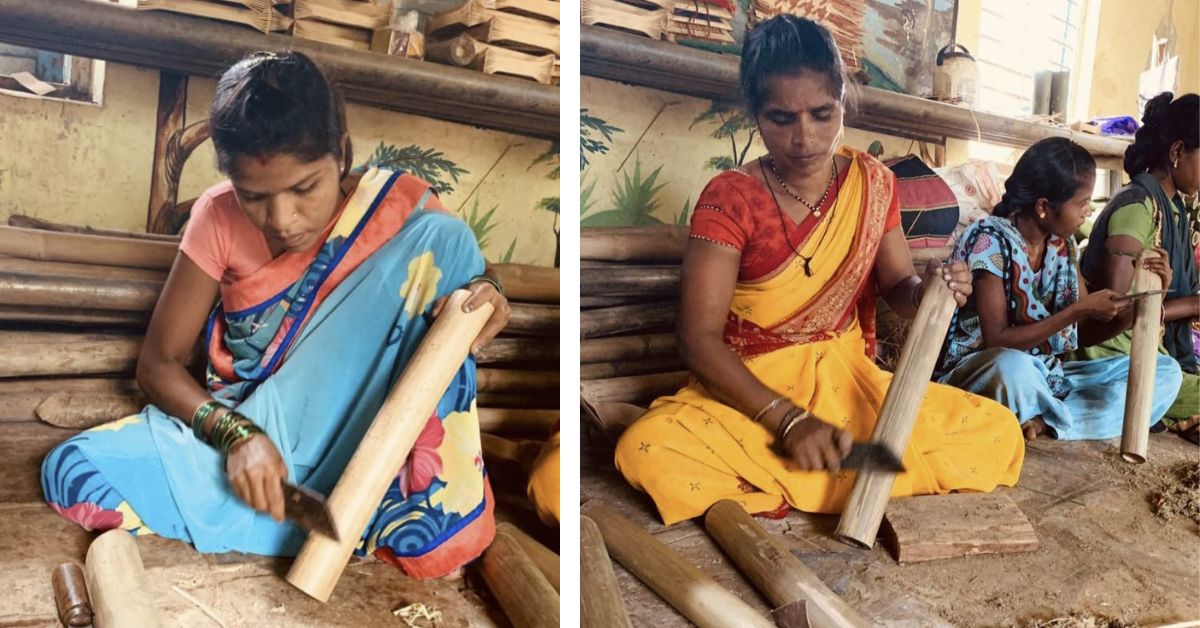
Namita has also trained multiple women in her village and nearby villages in the art.
“I want as many women to be independent as possible. I have trained more than 57 women so far and hope to train more. With the establishment of our company, we are hoping to get more work. The most important thing is that young girls of the village now don’t think about migrating to the city for work, they stay in the village and make bamboo products,” she shares.
Reflecting on her journey so far, Namita says, “It is not about how much I make every month or that I was able to represent our art and village on an international level, but rather about the confidence it has infused in me. I would have never imagined myself doing any of these things as a child, but today, here I am! I want every woman to experience this independence.” If you found our stories insightful, informative, or even just enjoyable, we invite you to consider making a voluntary payment to support the work we do at The Better India. Your contribution helps us continue producing quality content that educates, inspires, and drives positive change. Choose one of the payment options below for your contribution- By paying for the stories you value, you directly contribute to sustaining our efforts focused on making a difference in the world. Together, let’s ensure that impactful stories continue to be told and shared, enriching lives and communities alike. Thank you for your support. Here are some frequently asked questions you might find helpful to know why you are contributing?

Want to check out their products? Click here to visit their website.
(Edited by Pranita Bhat)
This story made me
-
97
-
121
-
89
-
167





